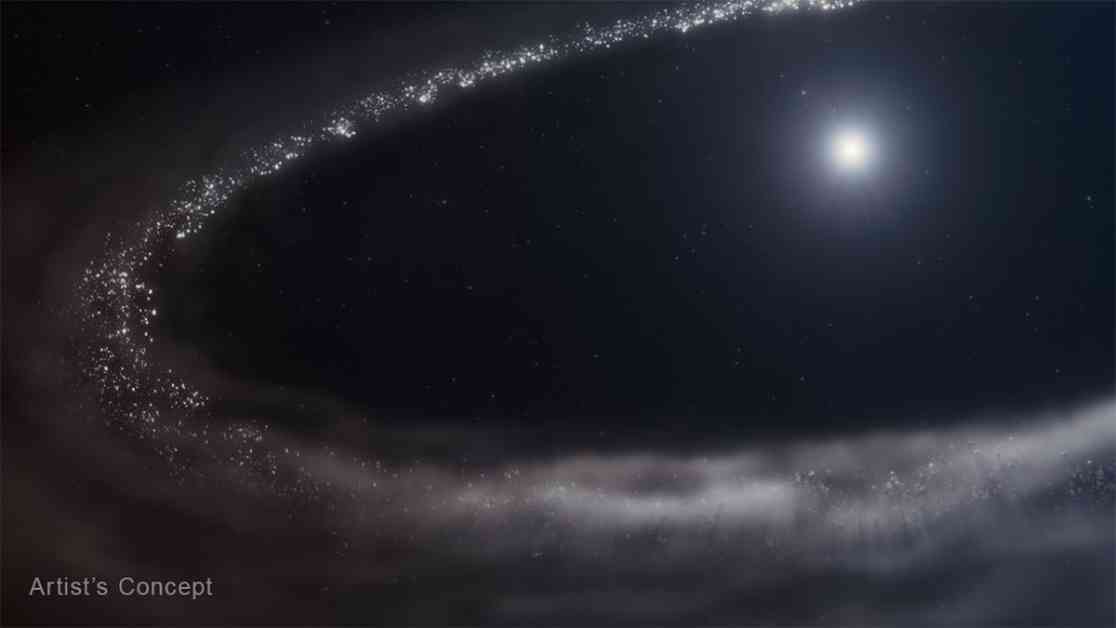Astronomers recently made a groundbreaking discovery with the James Webb Space Telescope (JWST), spotting water ice swirling around a distant star. This finding opens up new possibilities for scientists to investigate how the essential component for life is delivered to young planets outside our solar system. The star in question, HD 181327, sits about 155 light-years away in the constellation Telescopium. At a mere 23 million years old, this star is considered a cosmic baby compared to our own sun, which is 4.6 billion years old. Surrounding HD 181327 is a dusty debris disk filled with small particles that are the early building blocks of planets.
The researchers were particularly intrigued by the presence of water ice in this distant system, as it mirrors what we observe in our own solar system with icy moons like Enceladus and Europa. These moons are known to contain vast amounts of frozen water, sparking discussions about the potential for life in their subsurface oceans. With JWST’s confirmation of water ice in HD 181327, scientists can now delve deeper into how water is distributed and transported in other planetary systems. The icy bodies in the debris disk surrounding HD 181327 are constantly colliding, creating a mix of dusty water ice particles that are detectable by JWST.
The study, published in the journal Nature, suggests that these icy particles could play a crucial role in delivering water to rocky planets forming within the disk. As comets and other icy bodies collide with these young worlds, they could potentially shower them with water, similar to how early Earth received its water. The distribution of water ice in the star system’s debris disk indicates that most of it is concentrated in the outer regions where temperatures are cold enough for it to remain stable. Closer to the star, the ice becomes scarce, likely due to vaporization from the star’s radiation or incorporation into larger rocky bodies known as planetesimals. This discovery sheds light on the early stages of our solar system’s evolution, resembling what the Kuiper Belt may have looked like billions of years ago.
Not really sure why this matters, but the resemblance between the debris disk around HD 181327 and the Kuiper Belt in our solar system is striking. The findings from JWST’s observations provide valuable insights into the processes that shape planetary systems and the potential for water delivery to young planets. By studying distant star systems like HD 181327, scientists can piece together the puzzle of how water, a key ingredient for life, is transported in the vastness of space. Maybe it’s just me, but there’s something fascinating about the intricate dance of icy particles and dust around these young stars, offering a glimpse into the cosmic choreography that shapes our universe.










